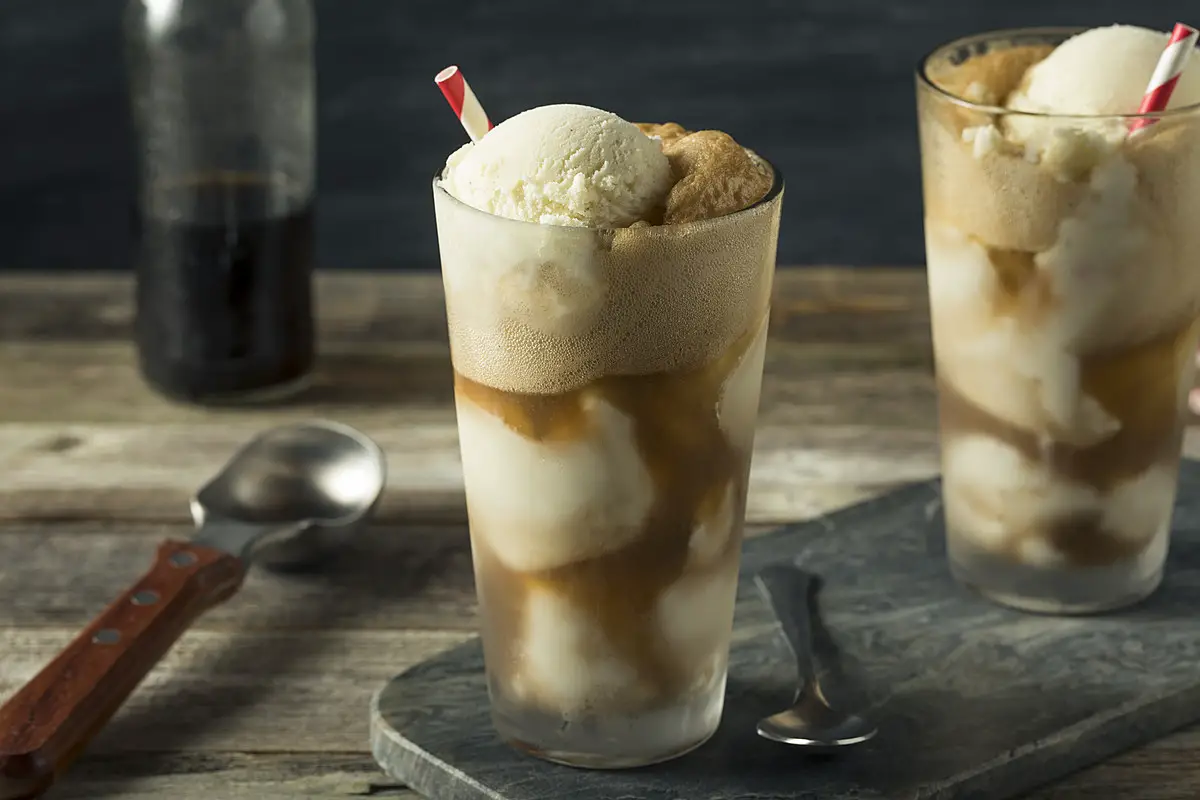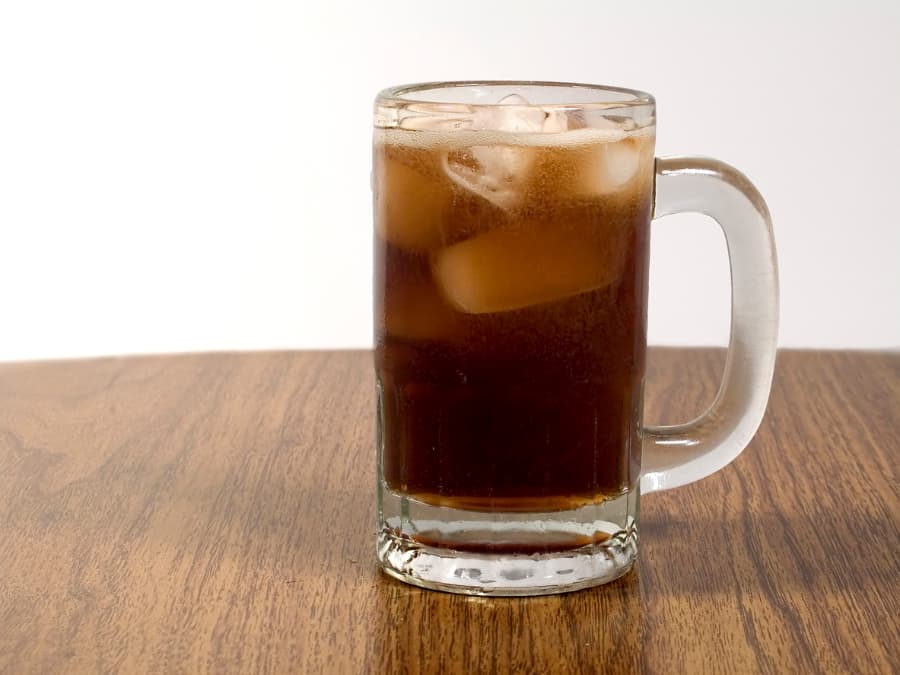Root beer is a carbonated drink sweetened with the primary ingredient, sassafras extract from either sarsaparilla or the tree’s root bark. Cream soda is also a carbonated drink but is sweetened primarily with vanilla bean plus a few other ingredients. Primary brands responsible for producing root beer brands also make distinct cream soda brands.
These include Mugs, Barqs, IBC, and A&W. While the two drinks are quite different when comparing them side by side, they also have some of the same attributes. Each boasts being a favored classic “soft drink” tracing back to the 1800s, using artificial sweeteners and some similar ingredients, allowing the production of the drinks simultaneously.
Aside from what’s similar about the drinks, the differences are as distinct as they would be between a grape soda and a cola. Root beer’s flavor is bolder, somewhat spicy from the herbal ingredients, and offers a rich, dark color, while cream soda is lighter in taste and more sugary with a yellow or tan tint.
While many people share a love of both drinks, understanding how they differ is key to deciding which you prefer. Let’s look more in-depth at each individual to help you make a more informed decision about which might stand out as your favorite.
Table of Contents
ToggleDo You Prefer Root Beer or Cream Soda?

Many people enjoy drinking root beer and cream soda, which is fine since these are two very distinct drinks. But how do you decide which you want more – if you had to choose? Root beer leaves an almost bitter, spicy aftertaste, while cream soda is light, airy, sweet, and creamy.
They have some of the same ingredients, except root beer contains intense flavors like molasses, spices, and herbs aside from the sweeteners. Cream soda has more strength from sweetening like vanilla bean or extract, making it more sugary or creamy, reminiscent of eggnog.
Rootbeer’s strength ranges from one brand to the next, with each changing the ingredients slightly, some more intense than the others. Cream soda is more consistent with each. Root beer is usually a deep brown with variations for each brand, while cream soda is always a light color, almost yellow or tan.
Root beer
Tracing back to the late 1800s, root beer recipes have been kept with it being represented in stores as a tonic before that. The substance was referenced as “root tea” by an early pharmacist before changing it to “root beer,” Charles E. Hire became the first in 1875 to commercialize the product from sassafras.
Safrole oil was banned in the 1960s based on its “carcinogenicity,” with manufacturers switching to artificial flavoring or a “safrole-free extract.” Many commercially manufactured root beers contain artificially produced or safrole-free sassafras extract combined with assorted flavors.
Some of the more common flavors used on the soft drink include honey, caramel, sweet birch, vanilla, cinnamon, wintergreen, molasses, black cherry bark, anise, licorice root, acacia, sarsaparilla root, and nutmeg. You can also find hard root beers commercially produced with alcohol.
Cream soda
Cream soda is known for its creamy, sugary, sweet taste. You can find a few variations, including red and brown as the two primary versions. E.M. Sheldon created the original recipe, but the first patent went to Alexander C. Howell for “cream soda water.
This drink consisted of wheat flour, egg whites, water, sodium bicarbonate, and sugar, along with flavorings like vanilla extract, lemon oil, and pineapple. Before consumption, the acid was blended with the water, either citric or tartaric.
Nowadays, the drink is mixed with artificial and natural flavors combined with phosphoric acid, sodium benzoate, sodium phosphate, caramel coloring, corn or sugar syrup, carbonated water, and caffeine. The colors worldwide will range from red, light tan, orange, pink, and even blue.
Are Cream Soda And Root Beer Just Different Flavors Of The Same Drink?
Many people like to compare the two drinks; they’re usually housed together in convenience stores and markets, and the drinks are distinct from each other with different flavors. The herbs, spices, and sassafras extract, along with other roots, provide a harshness to root beer that cream soda just doesn’t have.
Cream soda is light like you would expect from a drink with vanilla as the primary ingredient. The darkness of root beer lets you know that it will be spicy and have more of a ‘zip’ than the “airy” light coloring of cream soda. Also, root beer is usually caffeine-free, while cream soda is often caffeinated, with more calories and sugar for each serving than its counterpart.
Similarly, each does well with adding ice cream to create a float for a decadent dessert or used for frothy alcoholic cocktails of varying flavors. Root beer has an edge over cream soda for cooking when it’s added as an ingredient for barbecue sauces, tenderizing or basting meats, and so on.
Some people will combine various brands of the two sodas to create one original creamy, rich drink. Many will include ice cream to make a float or use Italian cream soda to make a unique sort of drink.
You might find you enjoy both drinks, but likely, find yourself drinking one more often than the other since they do have very distinct flavors unto themselves. Which do you prefer, the spicy, intense bite of root beer or the light sweetness of cream soda?
Conclusion
Cream soda and root beer are classic soft drinks, tracing back to the 1800s. Many people indulge in both beverages since each has an incredible and distinct flavor. It’s possible to make the beverages as home recipes to add your own spin on the ingredients, perhaps control some of the spice in the root beer or sugar in the cream soda.
These also make incredible desserts as floats or cocktails for evenings with friends. There’s much you can do with either drink. Do you need to choose between the two? Not really. It’s OK to enjoy both equally; even mix them up if you want something entirely unique.

I am a passionate beer connoisseur with a deep appreciation for the art and science of brewing. With years of experience tasting and evaluating various beers, I love to share my opinions and insights with others and I am always eager to engage in lively discussions about my favorite beverage.
















